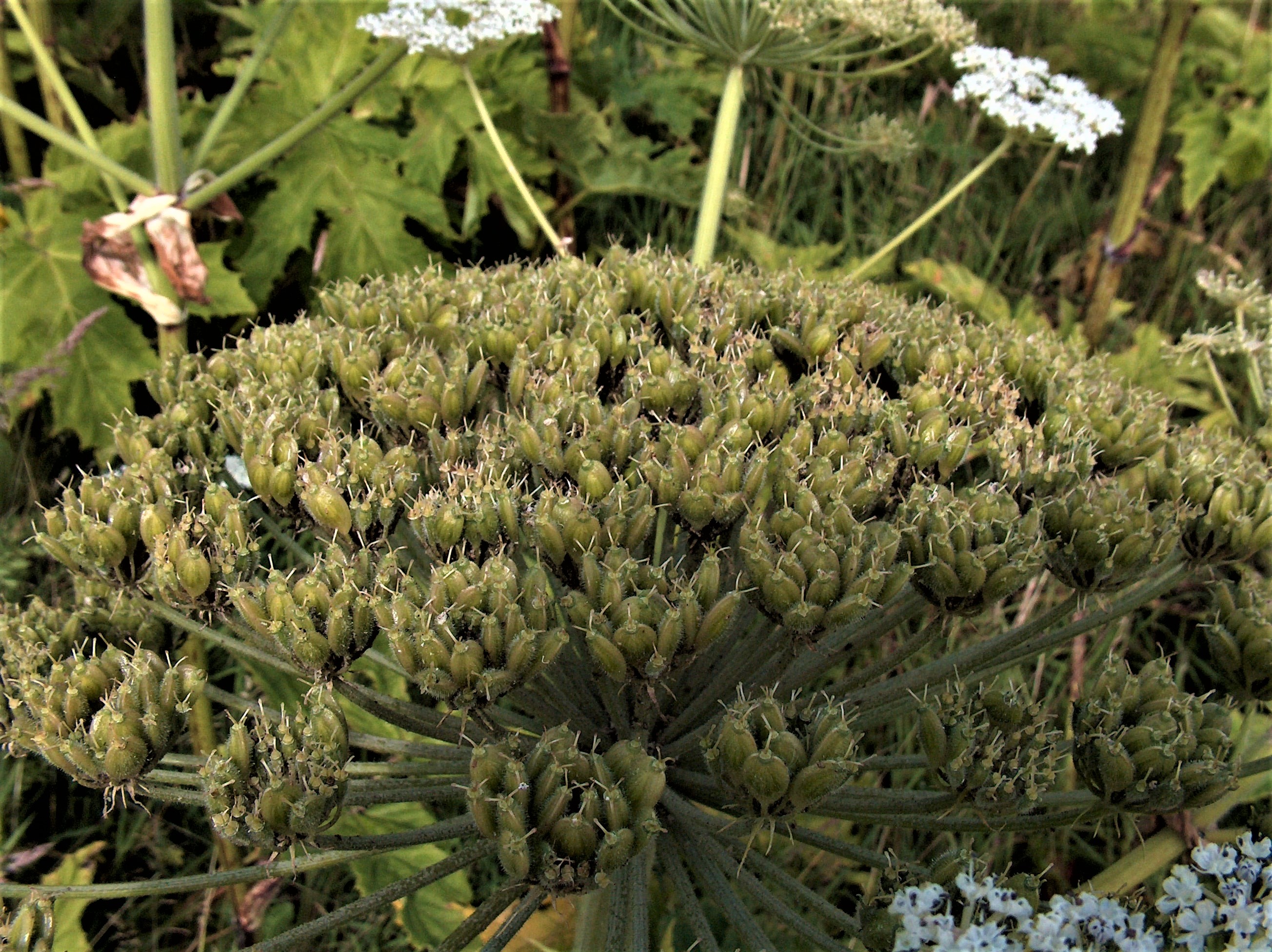Unlike Japanese Knotweed, Giant Hogweed flowers early in the growing season usually during late June or early July. The plant flower head can be up to 0.5 metres wide and is formed by flat topped clusters of tiny white flowers which are held in umbels. The tiny flowers are short lived, each forming a small seed.
As you can see in the image, each flowerhead can produce many seeds which will disperse as the plant dies over the course of the summer. Seeds are discharged and can be carried some distance from the source plant. Single plants can produce up to 50,000 seeds per specimen and these can remain viable for many years.
So, the important message here is that just one plant allowed to flower and discharge seed can go a very, very long way!
Even if Giant Hogweed has flowered and dispersed seed there are still options for a specialist to get the situation back under control. If this might affect you then why not Get in Touch for help from our team?



